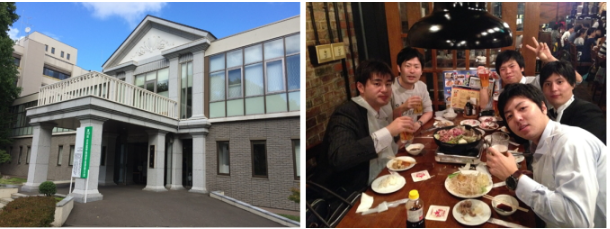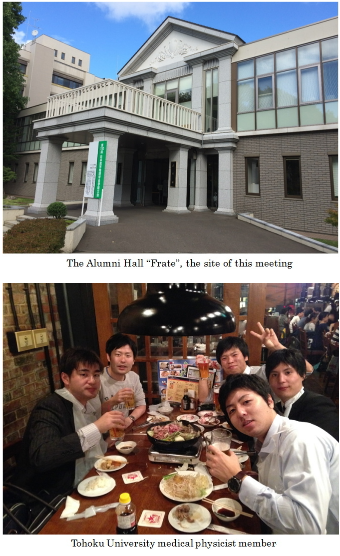2015.9.18~9.20:JSMP 110th Scientific meeting
The 2015 JSMP has been held in Sapporo, Japan. Dr. Kadoya (Assistant professor) has attended it for oral presentation at a joint symposium. Ms. Chiba (an assistant at Tohoku University) and Mr. Arai (D2), Mr. Abe (D3) have attended it for oral presentations.
■Date:2015.9.18~9.20
■Venue:The Alumni Hall “Frate”, Sapporo, Japan
■Conference name:JSMP 110th Scientific meeting

Kazuhiro Arai (D2)
I joined the 110th Scientific meeting of the Japan society of medical physics (JSMP) held in Sapporo, Japan September 18 – September 20, 2015. Besides, Dr. Kadoya (Assistant professor), Ms. Chiba (an assistant at Tohoku University) and Mr. Abe (D3) joined the meeting.
I had oral presentation with title of “Feasibility of CBCT-based proton dose calculation using the Histogram-matching method in proton beam therapy”. Tumor size and organ position change throughout the course of radiation therapy. Therefor adaptive radiation therapy based CBCT is desirable. As gantry-mounted CBCT scanners are currently being offered by venders, they enable us to obtain the daily patient’s anatomy information. However, establishing a standard protocol for CBCT-based dose calculation is not straightforward due to difference in HU values between planning CT (PCT) and CBCT. Especially, for proton therapy, the lower quality of CBCT image and high scatter-to-primary photon ratio may render the CBCT image unsuitable for direct proton dose calculation. Thus, we investigated the feasibility of CBCT-based proton dose calculation using HU modification for head and neck cancer. To evaluate the accuracy of the dose calculation, we compared depth dose profiles of proton beams between PCT (reference) and CBCT or mCBCT for phantom and patients. In addition to, we compared dose distributions using dosimetric parameters (e.g. PTV, CTV and parotid) and gamma-index between PCT and CBCT or mCBCT. Our results showed that HU modification using histogram matching algorithm could improve the proton dose calculation accuracy, providing the potential for clinical use of CBCT-based proton dose calculation for adaptive proton therapy. Not only us but also several groups had oral presentations on CBCT-based dose calculation and active discussions. I realized that this study is a hot topic. Several studies of BNCT that Southern Tohoku General Hospital I work at has introduced were also presented there. I learned many things through this meeting. Thank you for giving me this kind of opportunity.

